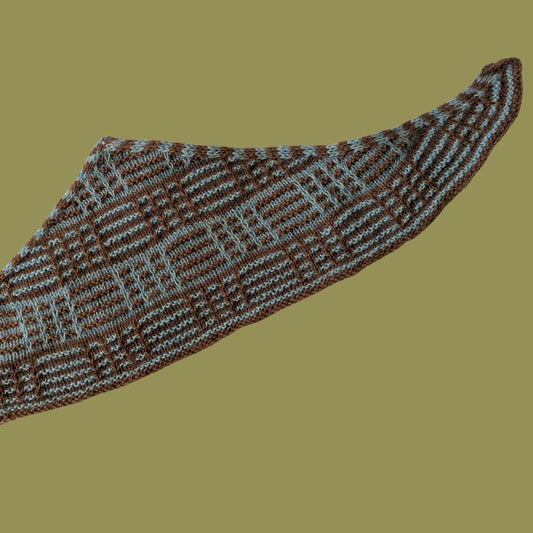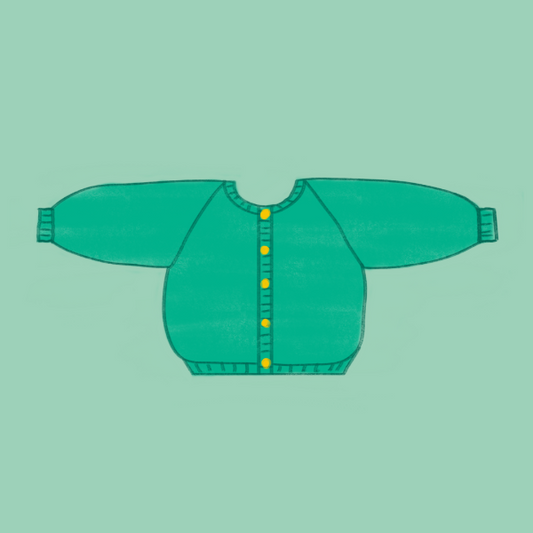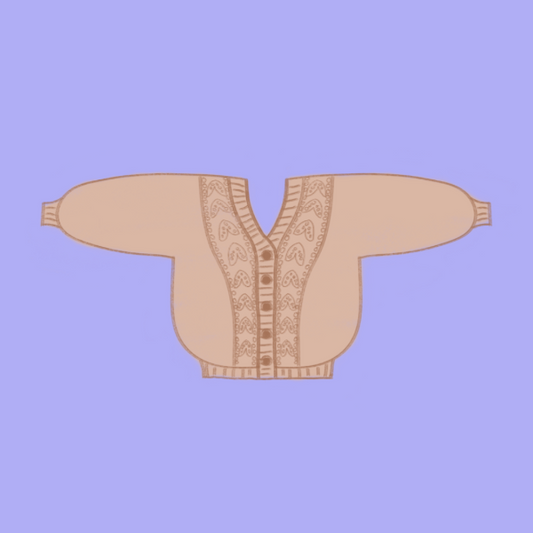🧶 Knitting complex cables without a cable needle: our tried and tested method 💪
Knit SisShare
Love cables but the cable needle is driving you crazy? Between slipping stitches, tangled cables, and the stress of losing a stitch along the way, we get it. Luckily, there's a technique for knitting cables—even complex ones— without having to lug around that famous third needle . And spoiler: it'll change your knitting life. ✨
In this article, we share with you our favorite method , tested on dozens of Knit-sis projects (hello Twist and Shout 💛), our safety tips , and the mistakes to avoid so that this technique becomes your new knitting superpower.
🧠 Why knit without a cable needle? (and when to avoid it)
Gain speed… without losing precision
The auxiliary needle is a bit like bicycle stabilizers: reassuring at first, but quickly cumbersome. Without it:
✅ you knit faster
✅ you gain in fluidity
✅ you stay in your rhythm without interrupting each twist
🧶 Louise: “I was addicted to my auxiliary needle… until the day I forgot it on the train. Since then, I've never used one again!”
⚠️ But it's not for all situations
Let's be honest: this method isn't magic in all cases.
❌ If you are knitting with mohair or very slippery yarn , be careful.
❌ If you are a complete beginner , wait until you have mastered the basics before removing the seat belt 😅
👉 Remember: Test first on a sample or an old ball of yarn, without pressure.
✋ The step-by-step method: how to make a cable without an auxiliary needle
Step 1: Identify the stitches to cross
For example, for a 2/2 twist to the left: cross 2 purl stitches with 2 knit stitches.
Step 2: Drop the first stitches (yes, really 😱)
Slip the first 2 stitches off the left needle , without knitting them , and… let them hang at the front (or at the back depending on the direction of the cable).
Step 3: Knit the following
Knit the next 2 stitches directly onto the left needle .
Step 4: Catch up the hanging stitches
Carefully catch the 2 dropped stitches (which won't have leaked, I promise 🤞) and knit them.
🎯 Knit-sis tip : Keep your thumbnail against the dangling stitches to secure them. And if you're nervous, try cotton or "sticky" yarn first.
🧪 The perfect training ground: our “Twist and Shout” model
Do you want to practice on a fun and modern model without falling into the grandpa's vest?
👉 We recommend the Twist and Shout Vest :
-
Raglan vest with beautiful twists that dance on the sleeves
-
Knitted top-down with 7 mm needles (so quick)
-
Perfect for testing your needle-free twists!
And for the mini-us? There's a kid-sized version too. Yes, it's so cute. 💛
🧵 Frequently asked questions we receive in the workshop (and their honest answers)
Is it dangerous to drop the stitches?
No. It's impressive at first, but the stitches hold better than you think , especially with wooly yarns. Test on a sample to reassure yourself.
Does it work with all twists?
👉 Yes, even 3/3 , as long as you are comfortable. For ultra-large twists, it can become unstable, so it's up to you depending on the yarn.
Is it suitable for beginners?
👉 We recommend having a little practice before jumping in without a safety net. But it comes quickly, and it's very satisfying !
💬 The tip we wish we had known earlier…
“You can knit complex cables without a cable needle. And that makes all the difference. Try it once, you won't believe it.”
🧡 – Lenny & Louise, co-founders of Knit-sis
👇 And now it's your turn!
Whether you're team "secure everything" or team "freestyle," this technique is worth trying at least once. It's changed the way we knit cables, and we're sure it will change yours too ✨
💡 Try it on the Twist and Shout model , or discover our special twist collection to take it to the next level.
📩 And if you want to receive our best knitting tips + our models to test in preview, it's here:
👉 I subscribe to the newsletter












